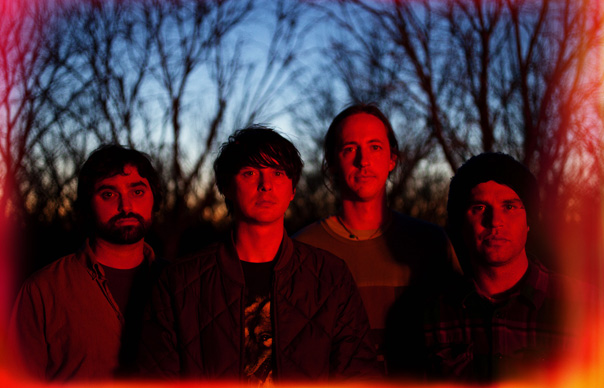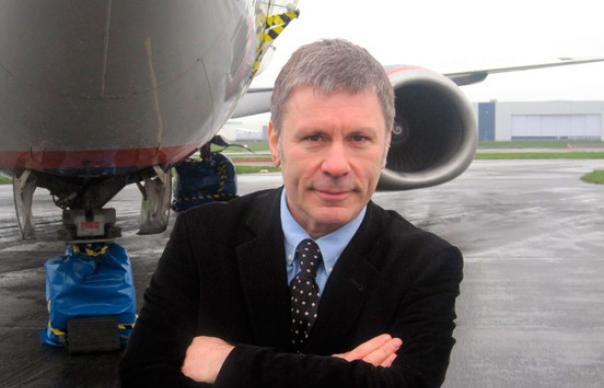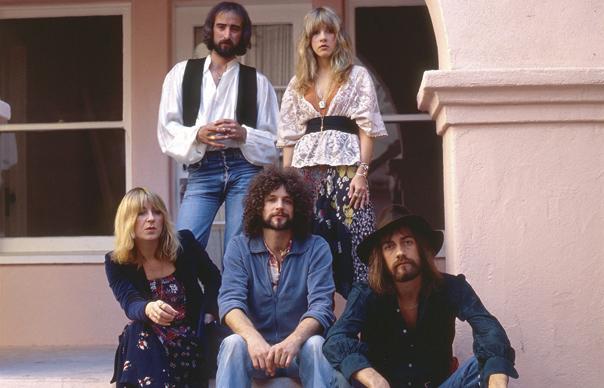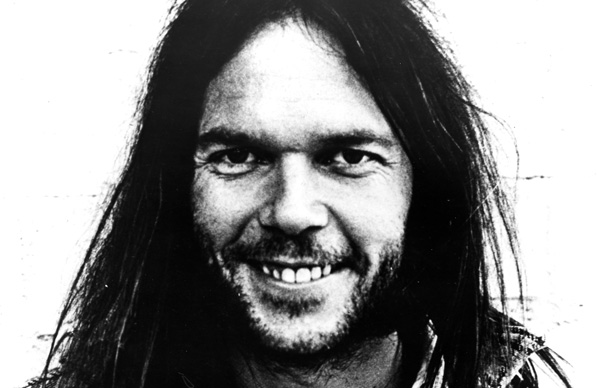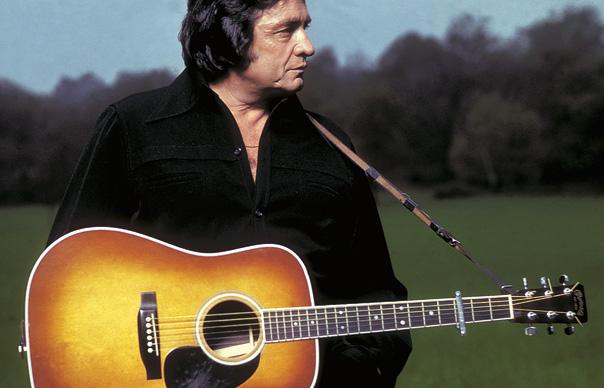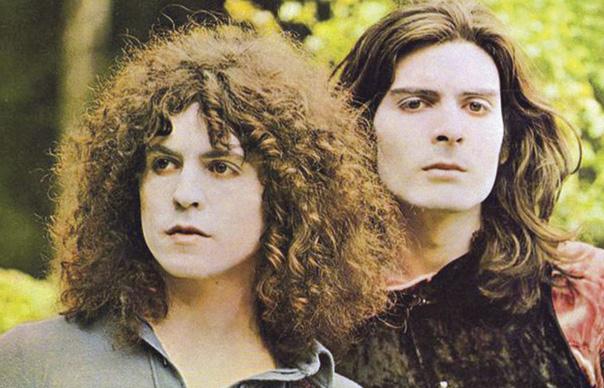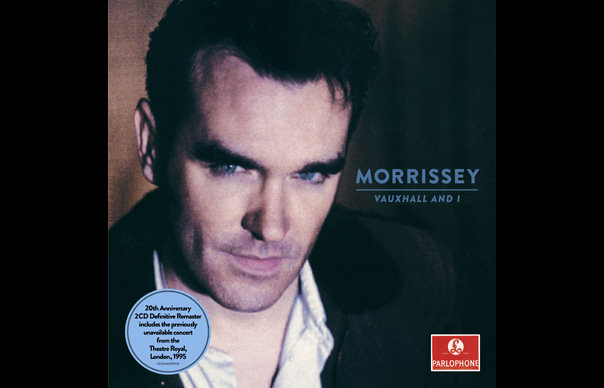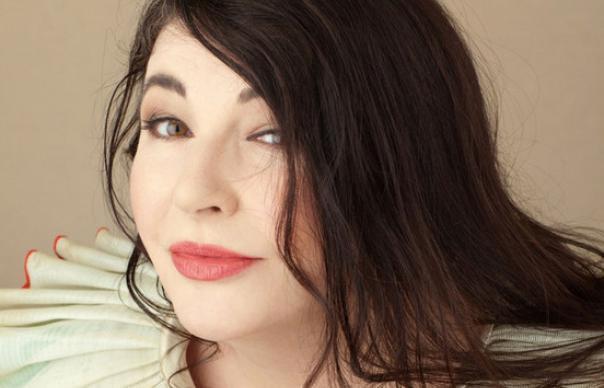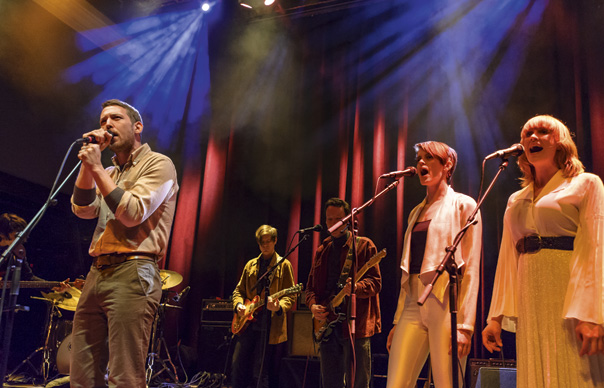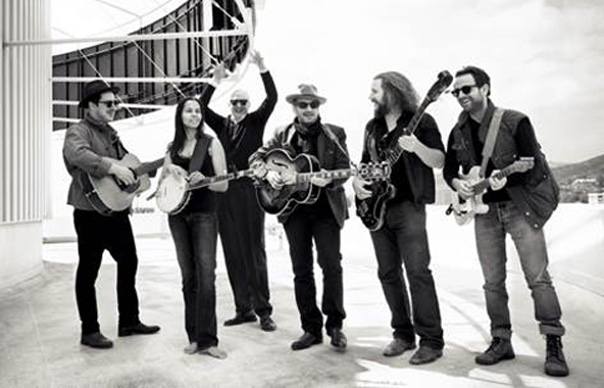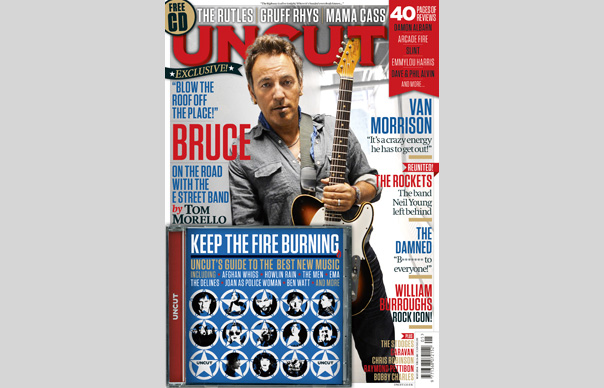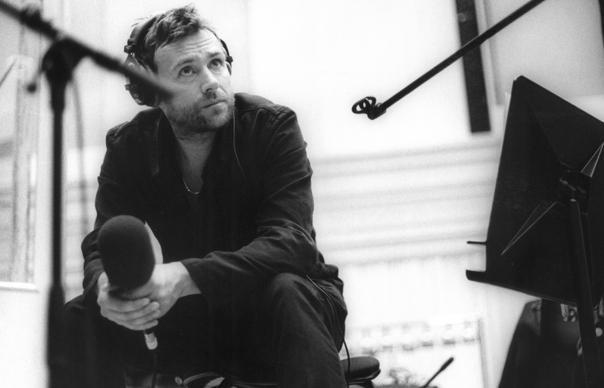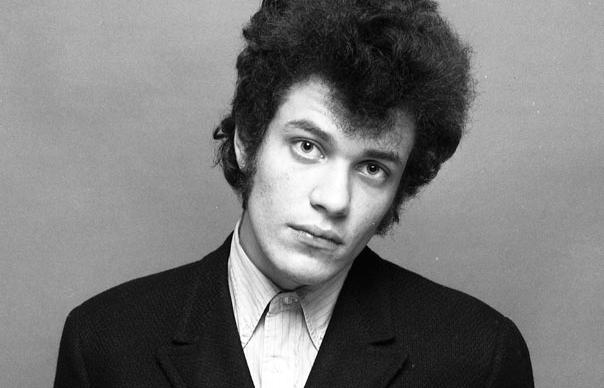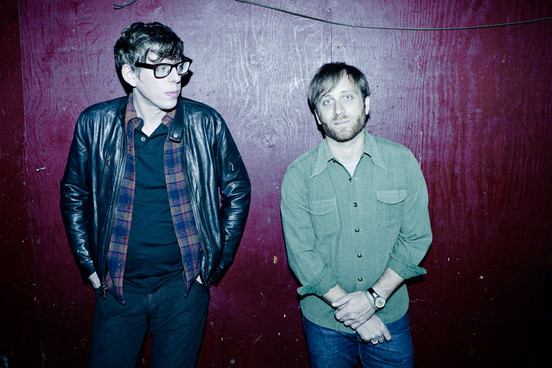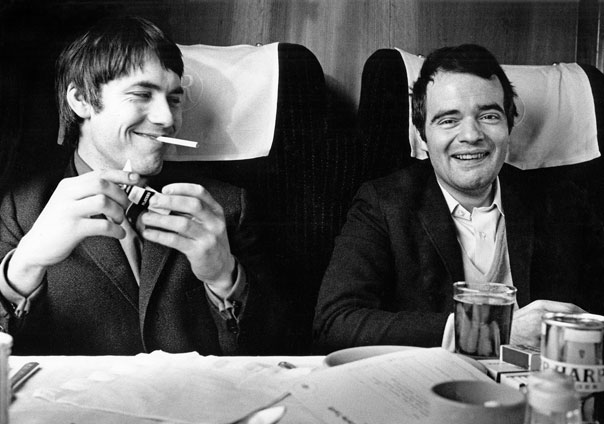Enter The Slasher House, the debut album from Avey Tare’s Slasher Flicks, consisting of Dave Portner (aka Avey Tare), Angel Deradoorian and Jeremy Hyman, is released on April 7. Avey Tare’s psychedelic journey with Animal Collective, though, is also worth checking out – in this archive feature from Uncut’s September 2012 (Take 184) issue, Stephen Troussé chats to the band about their wide-ranging career so far. “We got terrible reviews…” Interview: Stephen Troussé
________________________
From high-school friendship in mid-’90s Maryland through to the global acclaim of 2009’s Merriweather Post Pavilion, Animal Collective have charted an idiosyncratic, compelling course through modern American music: from psych-rock to avant-pop, via horror soundtracks, New York noise, the fringe of freak folk, Terry Riley minimalism and Brian Wilson harmonies. On the eve of their 10th album, Centipede Hz, they’ve somehow retained the enthusiasm of their teens, reminiscing about their work to Uncut with tenderness, and a certain pride. “Our friendship has always been more important than the music,” says Brian Weitz, aka Geologist, “I don’t know if we ever imagined we’d still be making music together after all these years. But I think we always knew our friendship would last.”
________________________
SPIRIT THEY’RE GONE, SPIRIT THEY’VE VANISHED
(Animal, 2000)
Though credited to Avey Tare (Dave Portner) and Panda Bear (Noah Lennox), the first release of the Animal Collective era is a surreal psych-rock suite harking back to Forever Changes and Ocean Rain.
Dave Portner: I wrote all the songs apart from one in my first year at college. I had been having a bad time but that summer really hanged my perspective on things. I worked at an outdoor nature camp for kids. And the season ended in August and I was like, we should record something. The songs weren’t about college, they were fantasy songs, really, coming out of reading a lot of dark short stories by Guy de Maupassant, a lot of horror. I feel like the emotion is sad, moving on from childhood. Leaving Maryland behind in a way.
Noah Lennox: Josh (Dibb, aka Deakin), Dave and I had played quite a lot, just sort of jamming together in a room for a year or so before that. But we didn’t really talk to each other much.
Dave: So this was the first time of hanging one-on-one with Noah. I’d always really liked Noah’s drumming. I’d beatbox little parts for him to explain what I wanted. I got him to use brushes to get some of that Ocean Rain vibe, yeah. Also Forever Changes. Those two records were very cohesive statements to me.
Noah: But rhythmically, too, we were also into this Destiny’s Child track, “Bills, Bills, Bills”. And Aaliyah’s “Are You That Somebody?”.
Dave: I just wanted to take it to a new level: an album. I think high school represented the band we were in, Automine, playing indie rock, really. And then Brian and I did stuff on the side that was more experimental. And I wanted to find a way to fuse it all together, into psychedelic music. Not that I thought I was going to make a classic, but I wanted to make a record like Forever Changes, that had a full flow. I’m definitely impressed we pulled it off, in that we really made an album. But we were learning about recording and mixing. It was a nightmare to mix. It was all a learning experience.
DANSE MANATEE
(Catsup Plate, 2001)
Setting the pattern for the years to come, the second AC album was a radical departure: an esoteric adventure in noise and loops.
Brian Weitz: Danse Manatee was the first record I had an input into. My contribution was loops really, things I’d recorded on minidisc. Electronics. The summer that Spirit came out, Dave and I lived in a small apartment in SoHo and then Noah moved to New York to be with his girlfriend of the time. And the three of us would get together and improvise a lot. I think that’s the genesis of Danse Manatee, these longs improv sessions we would do. We recorded hundreds of hours of material but it was all stolen when I moved apartment. But I think everything that came after came from that material. At the time New York was quite exciting: The Strokes were happening and ARE Weapons. But I think we wanted to bring some of the excitement of the noise bands into more melodic music.
Dave: We played with Black Dice a lot. But The Rapture was probably also on the bill at our first gig at The Cooler. Did we alienate fans of the first record? Definitely! We got terrible reviews. We weren’t trying to. We thought we were next level!
HOLLINNDAGAIN
(St Ives, 2002)
A sprawling document of the Collective’s early improv-based live show.
Brian: The title isn’t Icelandic, it’s Dave-ish! It’s a live album but I think we do consider it part of the Animal Collective canon because most of the songs weren’t available elsewhere. It really documents the time when we were first beginning to go on the road, playing with bands with Black Dice.
Noah: They were a huge early inspiration for us.
Dave: We’d go on the road with this van that we borrowed from Noah’s family. We bought a roof case to hold all the gear, but then we discovered that the van didn’t have a rack to fit it. We had to kind of tie it on there with rope. We were beginning to get a following in New York, but some of the shows in places like Nashville there’d be like a handful of people showing up.
Noah: One time there was just one guy in the audience. And he left. Though he said he just wanted to check out the sound from outside the venue.
CAMPFIRE SONGS
(Catsup Plate, 2003)
Josh Dibb aka Deakin rejoins his comrades for this wintry, impressionistic suite of songs for frazzled Cub Scouts.
Noah: Doing an album of just acoustic songs, that had that kind of warmth, was an idea we had for a while.
Dave: We’d tried it out a couple of times. The album that was released was maybe the third or fourth attempt. We recorded it in November 2001 on my aunt’s porch in North Maryland. It was freezing! We just had three microphones and we played the songs through in one take.
Noah: We played one gig, just sitting on the floor with the audience around us, in New York. I think it might be the best show we’ve ever done.
Brian: Was it a post-9/11 epitaph to the early noughties New York scene? Maybe. Certainly a lot of the energy went out of Manhattan. People started to play in Brooklyn more.
HERE COMES THE INDIAN
(Paw Tracks, 2003)
The first release to feature the full Collective complement ironically seems to capture the sound of the band falling chaotically apart.
Dave: It’s the first record to be credited to Animal Collective because all four of us played on it, and Avey Tare, Panda Bear, Geologist and Deakin was going to look kinda long-winded on the cover. If it were up to us we would still use different names for each release. But it was becoming clear we’d have to settle on a single name if we wanted to continue to make records.
Brian: We’d always been into horror movie music, like the soundtrack to The Shining. And I guess you can hear that on tracks like “Infant Dressing Table”. But I think that the album sounds so hectic and scary because we were just so burnt out.
Dave: We’d been touring through the South with Black Dice, sleeping on people’s floors, scraping by with no money, dealing with broken-down vans…
Brian: I don’t know if we ever thought of giving up, but it was getting so hard. And when we were recording the album we couldn’t afford to finish it. We played it to labels and nobody was interested. I don’t know if it was a make or break album, but I think if we hadn’t finished it we might have gone our separate ways… I actually headed out to Arizona to go to grad school at this point. In the end, Todd Hyman at Carpark Records, who was a really big fan and supporter, offered to set up the Paw Tracks label so we could release it via them. I remember Dave playing the finished album to me back near our high school and being amazed – I did not think the finished album was going to end up sounding like this.
SUNG TONGS
(Fat Cat, 2004)
Back to basics for the album that suggested AC might be fellow travellers on the freak folk trail.
Dave: After Here Comes The Indian we were really burnt out. Noah and I were barely speaking to each other. So Sung Tongs was really an attempt to go back to basics with just the two of us. We started opening for acts like múm and Four Tet and that was a real change from the days of touring with Black Dice. Although the people hadn’t necessarily come to hear us, it was an eye-opener to play venues with decent sound and crowds. I remember doing an interview and getting stoned with some journalist in Europe, and then playing the gig and kind of freaking out at how many people were in the audience now…
Noah: There was an ambient element to Sung Tongs but it didn’t really come from múm or Four Tet – we were already fans of Kompakt’s Pop Ambient series. I guess we were kind of trying to do something similar just using acoustic guitars.
Dave: To record the album we went out to Colorado, where my parents lived, with Rusty Santos. Working with Rusty was great – getting that kind of input on mixing and mastering was something we’d never really had before.
FEELS
(Fat Cat, 2005)
The record that made the band’s name, an album of indie rock romanticism, suggesting that AC were lysergic heirs to the likes of Mercury Rev.
Dave: I think Sung Tongs was the record that introduced us to a lot of people but with Feels it really felt like a step up. If you’d got into us with Here Comes The Indian it might have seemed like a much more conventional record, but if you’d heard Spirit They’re Gone it might seem like we just took a detour for a few records.
Brian: A very long detour!
Noah: I remember a band we were touring with said, “Wow, that was like an indie rock show”, and a few reviews said something similar. We certainly noticed the crowds getting bigger.
Josh: I suppose in many ways it was our most accessible album. There were a lot of love songs on it. Dave was getting engaged [to múm member Kristín Anna Valtýsdóttir] and Noah had got married [to fashion designer Fernanda Pereira], had a daughter and moved to Portugal.
Noah: We started referring to it as our “love album” but it was really just the joy coming out in our music. A lot of our friends thought it was maybe too happy…
Josh: The success was great but a little scary. It felt important to try and stay in control. We had to start turning down more stuff. Who did we turn down? Well, we were asked if we’d support the Red Hot Chili Peppers. We didn’t really think that’d work.
STRAWBERRY JAM
(Domino, 2007)
Once again evading the obvious career path, with Strawberry Jam the Collective delivered an album of fruity but defiantly obtuse psych-pop jams.
Dave: I suppose after Feels and then Noah’s album [Panda Bear’s 2007 Person Pitch], there was a certain momentum building behind the band, but I don’t know if we consciously set out to wrongfoot people with Strawberry Jam. We’re not really a linear band. The growth of the band is more like a tree: we naturally branch off in different directions all the time. In the past we’d have a particular feel or a theme for an album, but here it felt like we were all doing our own thing. It was kind of a jagged process putting the record together.
Noah: We recorded in the desert in Arizona. We were after something kind of gnarled and spikey.
Brian: It’s difficult to tell what people think of as your “pop” album. For a lot of people Strawberry Jam is our pop record. I remember playing a gig at the time and a girl came up to us afterwards and complained, “I came all this way on crutches to see you and you never played ‘Winter Wonder Land’!” I suppose by the tour we were already playing material that would end up on Merriweather…
MERRIWEATHER POST PAVILION
(Domino, 2009)
Uncut’s album of the year for 2009 was the fulfilment of everything Animal Collective had ever promised: ecstatic anthems, psychedelic reels, natural rapture and hymns to the everyday.
Brian: Josh had told us he wasn’t going to take part in the next tour so we had to decide how we were going to make an album that wasn’t so much focused on guitar. So working on Merriweather did feel like starting something new, experimenting with new ways of putting songs together. Noah’s album [Person Pitch] had blown us away, so it seemed natural to start working with samplers.
Dave: In a funny way it did feel like a sequel to Danse Manatee. Just the three of us experimenting again. We recorded with Ben Allen down at the Sweet Tea Studio in Mississippi. That place was awesome.
Brian: We wanted to work with Ben because of his hip-hop experience – he’d worked with Gnarls Barkley and helped produce all those Bad Boy records, and we wanted to develop the low end of our music. But he grew up in Athens, Georgia on all those ’80s indie rock bands, too. He has a pop sensibility, as well: he was always trying to make the vocals a bit brighter, but we’d always be mixing them back down…
Noah: We’d always been into dance music, but this was the probably the first record where you could really hear that influence. A lot of people have mentioned that it sounded like an ecstasy record, but I don’t think we were ever into the full-blown rave thing.
Dave: We were a little surprised by the intensity of the reaction to Merriweather, but I don’t think we ever felt overwhelmed by it. It did feel like climbing a mountain, you know? It was a great trip, a really long trip, but by the end of the tour it was good to come back down to earth.
CENTIPEDE HZ
(Domino, 2012)
For their 10th album Animal Collective reconvene as a four-piece and return to their roots as a teenage jam band, albeit with results redolent of stadium Pink Floyd.
Dave: We’re all based in different cities now, so it’s great to get back together and play as a band again. I think that space away from each other has definitely helped us stick together as friends.
Noah: I guess it does sound like a stadium rock album in some ways. I think this was the first time I’ve played sit-down drums since Here Comes The Indian. I guess the big drum sound is pretty distinctive – we wanted that contact mic drum sound you hear on old Brazilian records.
Dave: We have been getting a few people saying it sounds like a prog record: someone in Japan mentioned Rush! A lot of the samples come from a CD of these weird pirate radio idents – we never knew who Johnnie Walker was. People have been asking if it’s a reference to the whisky!
Brian: I suppose it is unusual for us to still be good friends, to still be working together. I don’t know if we ever imagined that we’d still be making music together after all these years. But I think we always knew our friendship would last.


